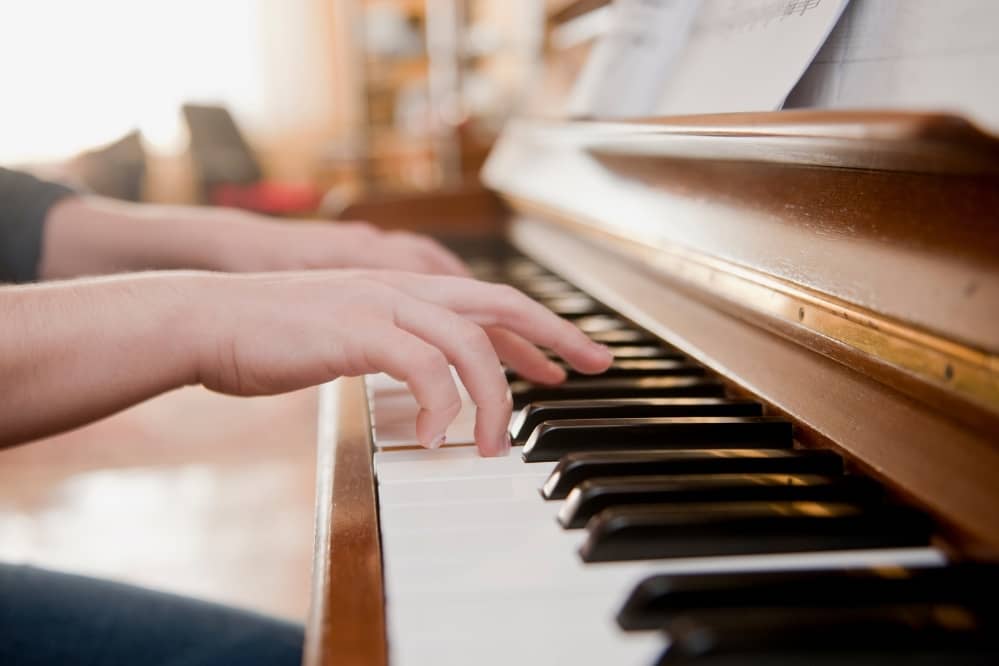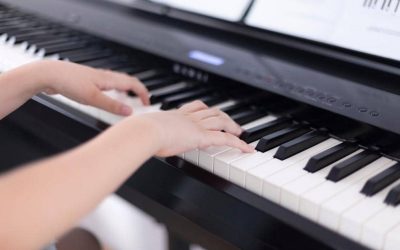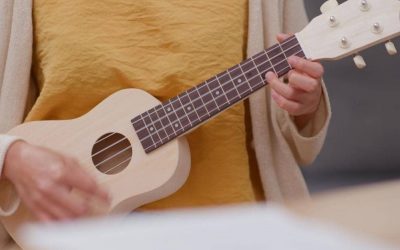When you start learning piano, it can seem so simple, pressing one or two keys at a time. Before you know it, however, you’re trying to keep up with the insane pace of Liszt pieces or the swift sweet speed jazz numbers.
Whatever your preferred musical genre, if you want to play complex songs, and especially those at faster tempos, you need to develop greater quickness and finger dexterity. This means training your fingers to keep pace without losing their place on the keyboard or tiring out in the process.
Thankfully, these exercises can enable you to do just that.
1. Play on Different Kinds of Keyboards
One of the biggest piano life hacks for improving your fingers’ strength and dexterity is the fact that different kinds of keyboards make for different playing experiences. A grand piano is going to be a very different type of playing experience than a grand piano. As such, playing pieces on different kinds of pianos can be a great way of varying your finger work, including your dexterity.
2. Play Scales
Now, if you play the piano, or any instrument for that matter, chances are you probably already know about this alternative, if for no other reason than you’re likely seeking any excuse not to do it. Well, sorry – scales are an essential part of the piano-playing instrument learning dexterity-building process.
Just as football players have to suffer through long hot Two-a-Day training sessions during preseason workouts and ballet dancers have to do an enormous amount of strenuous stretches to build muscle strength and stay limber, you need to do scales to increase finger dexterity.
There are different types of scales which you can play, each of which can improve your finger dexterity in different ways. For example, you’ll want to alternate between playing staccato notes, which are short and sharp, and legato notes, which are nice and smooth, or playing in minor versus major chromatic scales, or with one or both hands.
3. Finger Isolation
It’s one thing to practice a piece with all of your fingers in motion. It’s quite another to work out one finger at a time. Finger isolation can be a great way to accomplish this.
Set your fingers on the keys so that each one is paired up with a white key. Press down on the keys in turn, one finger to one key, and so on, from one finger and key to the next.
Another useful exercise is to press all of the keys down in unison and then let them go, or play a single key (say, your thumb) while the others are held down.
4. Finger Stretches
Having good finger dexterity means stretching them out as you would any other set of muscles.
Some quick and easy finger stretches for piano playing include the following:
- Flexor stretches, which involve placing your hands flat on the table and inching your fingers toward your hand
- Spreading your fingers out and squeezing and holding two fingers together
- Placing your palm on a wall and inching one finger upward after another, like a spider creeping up the wall, as far as your fingers can extend, and holding this position for a few seconds
- Rubbing your palm from the edge of your hand to your pinkie
5. Squeezing a Strengthening Ball
This doesn’t have to be a “ball,” per se, and can take many different forms, but stress balls are indeed a perfect example of the essence of the idea. These balls or items should ideally have enough resistance to make squeezing them difficult while still being malleable enough that you can press it inward with your fingers and palms before releasing it, allowing it to resume its original shape.
Doing this can help make your hands and fingers stronger, which in turn can improve their stamina as well as their dexterity.
There is also the prospect of using a basic ball of paper to do the job as well. If you don’t have a stress ball or something similar on hand, all you have to do is take some paper and crumple it up, flexing your fingers as you do so, allowing you to get a similar workout.
6. Work on Your Weaker Day
If you hit the gym (or just hit social media sites where your gym-going friends show off their “progress”), you’ve probably heard the edict “Don’t Skip Leg Day.” There are plenty of memes that go along with these phrases featuring people with well-built upper bodies and stick thin legs. The basic idea at play here is all too evident – you don’t want your strength building to be so lopsided as to leave you with part of your body almost comically weaker than another.
The same idea works with finger stamina, strength, and dexterity. It may be easier to carry out the exercises on this list with your strong hand, but that’s all the more reason to expend even more effort on your weaker hand.
From Handel to “Hit the Road, Jack,” almost every complex piano piece requires two hands, which means both need to be strong, agile, and dexterous.
7. Play Different Styles
Piano music is played in all kinds of contexts, from concert halls to rock concerts to jazz sessions. No less pop royalty than Lady Gaga herself is proof of the power of blending genres, being a classically-trained pianist perfectly capable of doing “Bad Romance” as a live piano acoustic version. Of course, her Ladyship Ms. Gaga didn’t get to that point by just playing the same kind of music over and over.
In this age of remixes and multimedia, genre-blending is more popular than ever. What’s more, not only is it a great way of increasing your overall piano repertoire, it can also help increase your overall dexterity and skill. Some of the skills it takes to play “Poker Face,” Purcell, and Charlie Parker are the same, but pop, jazz, rock, and classical piano also all have individual skill sets.
Varying your play can help get your fingers used to different rhythms and placements on the keys, and can also help things from getting boring.
8. Work at Faster Tempos
We have already mentioned that faster keywork is a major hallmark of technical expertise. That said, they are also an exercise in themselves. Just as wind sprints or fast-paced singing exercises can increase a football player or an opera singer’s stamina, so too can playing at faster tempos improve finger dexterity.
A velocity exercise, for example, can be a great way to warm up your fingers and increase their overall dexterity when tickling the ivories. To start with, play up and down a scale in a circular motion with your right hand. Your wrist should twist downward as the notes get higher and the reverse as they get lower. This can help work out your wrist and hands as you prepare for more strenuous piano-playing action.
The same can be done with your left hand as you move it in a gentle wrist-turning rotational motion, which can in turn be followed with increased finger action at quicker tempos.
Another way to do this is by playing in rhythm with a metronome, which can allow you to do this in a more precise way.
9. Pentascales and Mixing Things up
By this point, you probably have a pretty good idea as to just how much variety there is in terms of exercises that can serve to improve your finger dexterity. Well, we’re not quite done yet, because once you learn all of the aforementioned methods, the next big step is to mix them up.
Just as variations on a theme can help bring old musical motifs back to life in a new way, the same is true of mixing up exercise routines. If you have tried playing staccato and legato, for example, you might try playing them back to back, or skipping notes to make things more challenging.
In addition, you might want to consider working with exercises that involve pentascales. Ascending and descending pentascales along the C D E F G note range are relatively easy to do technically-speaking, but can be fatiguing if you don’t have the dexterity and muscle strength to pull it off. Practicing these scales is a good way to improve both.
10. Hanon Exercises
Last, but not least, we come to the big book of piano finger dexterity exercises. If you have started doing piano finger exercises or searching for them online, chances are you have come across the Hanon exercises. These are over 200 exercises compiled in a neatly standardized handbook. If you’re looking for a way to more classically train yourself to improve your piano playing strength and dexterity, these exercises are a great option.
Final Thoughts
There are many ways you can improve your finger work, dexterity, technique, and overall skill. By taking advantage of these training methods, you can improve your finger’s strength and dexterity while giving yourself vital practice, helping you play whatever piano tunes “strike a chord” with you.






